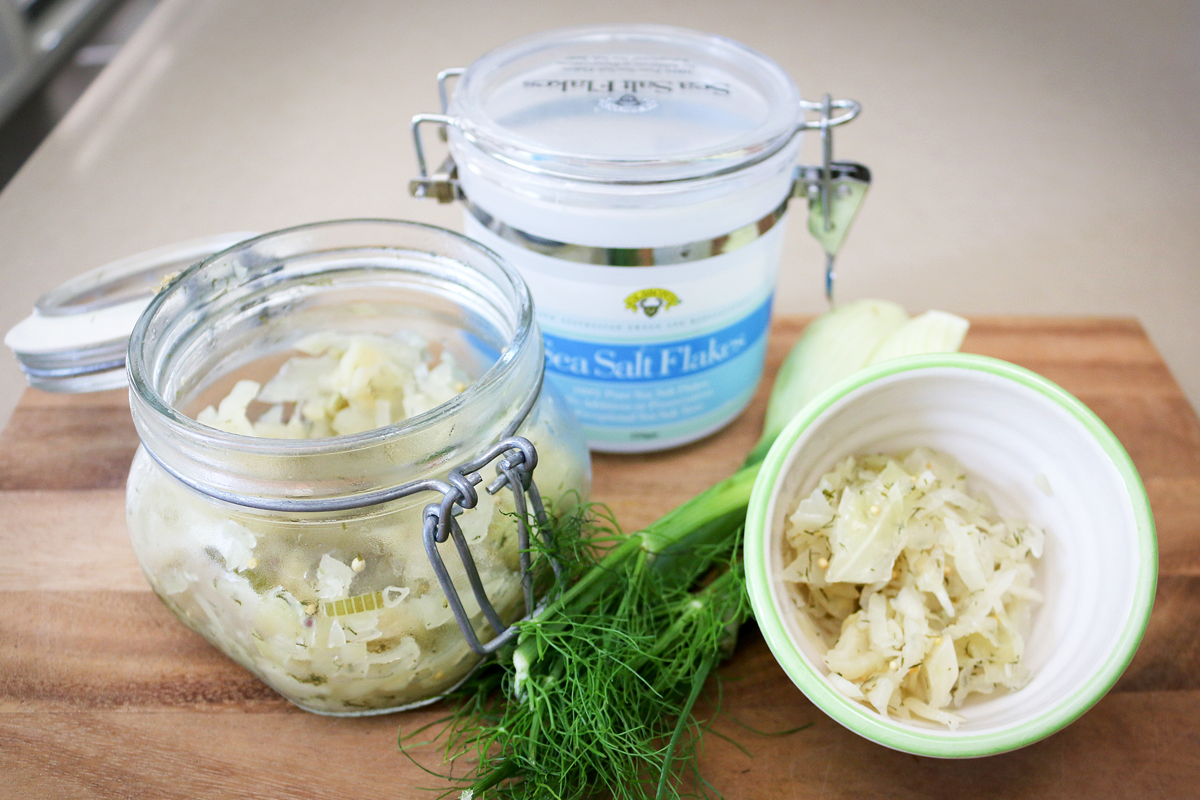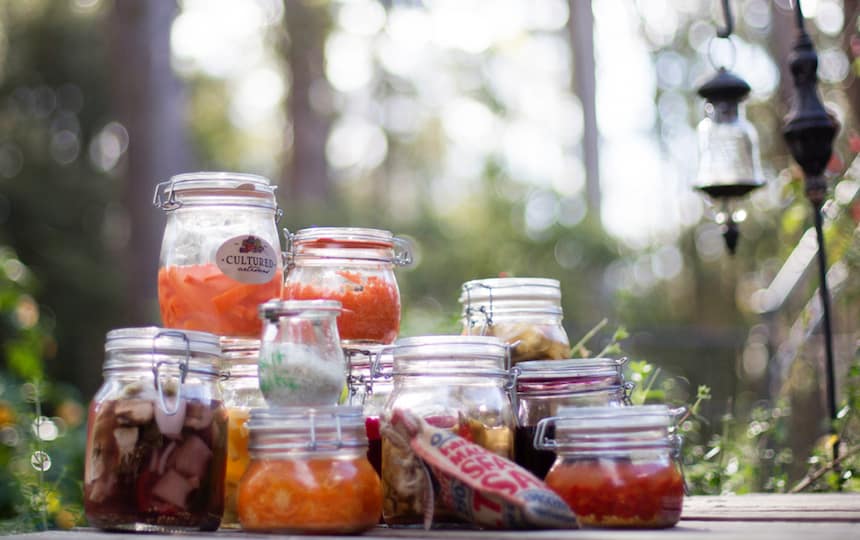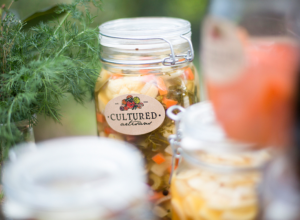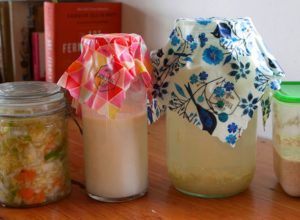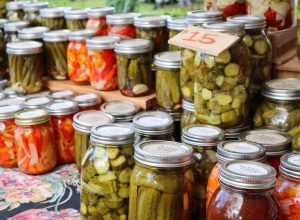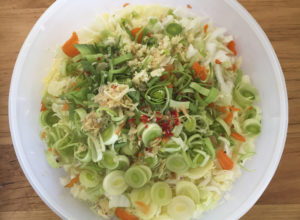Not only are fermented foods great for your gut health, fermenting is a fantastic way to preserve fresh produce like cabbage, cucumbers and radishes in the form of sauerkraut, pickles and kimchi.
Consuming fermented foods and drinks promotes diversity of gut microbes, builds resilience in our immune function and has other benefits.
“Fermenting uses microbes in, on and around us to create foods that benefit our gut and bodies: microbes consume sugars and create enzymes and vitamins, and perform other digestive functions” writes Gillian Kozicki from Cultured Artisan in issue three of Pip Magazine.
Here, we show you how to make sauerkraut yourself. It’s easy, fun, and is a good way of preserving that surplus of cabbage you may have.
How to make sauerkraut
For the cabbage to ferment rather than rot, air needs to be excluded under brine. Microbes are already present on the cabbage. The brine is created by massaging, pounding or letting the salt extract the juice.
Other vegetables, fruits, herbs and spices can be added for flavour and colour.
Ingredients:
• 1/2 a green cabbage
• 1 fennel bulb
• 1 brown onion
• 2 small garlic cloves
• 1 teaspoon of dill seeds or fresh dill
• 1 teaspoon of yellow mustard seeds
• 4 bay leaves
• 2 teaspoons of salt (or use organic smokey salt for a ‘smoked’ version)
• 1 carrot
• 1 litre jar, with lid
• 1 litre of 1.5 % brine [15 grams of salt in 1 litre of filtered water], if necessary.
Method
1. Remove and save the outer leaves, then remove the core and slice the cabbage.
2. Wash and clean the fennel and onion, then slice them.
3. Peel and chop the garlic.
4. Combine ingredients – except the carrot – in a large mixing bowl.
5. Salt to taste.
6. Massage together until you can wring/squeeze a handful, and it drips like a sponge.
7. Pack the mix firmly into the jar, to remove air pockets and raise the juices. Fill up to the shoulder, leaving two to three centimetres for the mix to rise during fermentation.
8. Place a clean folded cabbage leaf and a piece of carrot on top as a plug to hold the mixture under the juices/brine. If there is insufficient juice to cover the mixture, add additional brine.
9. Seal the jar and label it, including the date.
10. Place the jar out of direct light for one to two weeks before transferring it to the fridge where it will continue to ferment at a slower rate.

